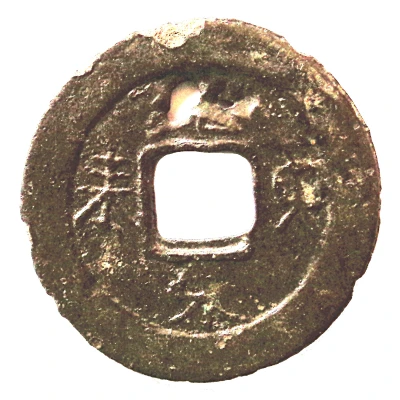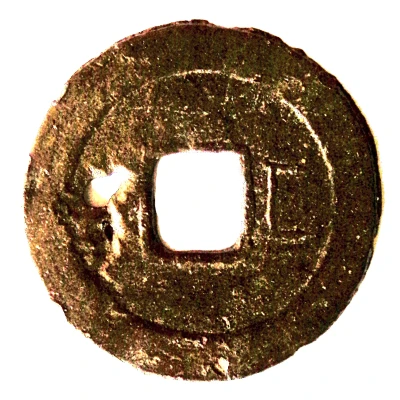


© John3 16
1 Cash - Xianzhu Yinglai Bangka ND
| Tin | 3.01 g | 26.01 mm |
| Issuer | Bangka Island (Indonesian States) |
|---|---|
| Type | Token |
| Years | 1710-1825 |
| Value | 1 Cash |
| Composition | Tin |
| Weight | 3.01 g |
| Diameter | 26.01 mm |
| Thickness | 1.1 mm |
| Shape | Round with a square hole |
| Orientation | Coin alignment ↑↓ |
| Demonetized | Yes |
| Updated | 2024-10-05 |
| Numista | N#108063 |
|---|---|
| Rarity index | 95% |
Reverse
Two Chinese ideograms read right to left.
Script: Chinese (traditional, regular script)
Lettering: 宜 平
Unabridged legend: ping yi (Mandarin)/ping i (Hakka)
Edge
Plain
Comment
Since the discovery of its tin deposit in 1710, Bangka provided the raw materials for much of Palembang's base coinage until the island was lost to the British in 1812. The Palembang Sultanate mandated directed the predominantly Chinese mining communities in Bangka to mint their own Chinese-styled tokens as opposed to "regular" Malay-styled coins issued by the Sultanate. However, according to Mitchiner & Yih (2013:32), there is little doubt that some of the Bangka tokens circulated within Palembang as the island was administered directly from the city.See:
- Millies, Henricus Christiaan (1871). Recherches sur les Monnaies des Indigènes de l'Archipel Indien et de la Pèninsule Malaie.
- Mitchiner, Michael and Tjong Ding Yih (2013). "Coin Circulation in Palembang (Sumatra), circa AD 1710 to 1825. Sultanate coins minted at Palembang."
- Mitchiner, Michael and Tjong Ding Yih (2014). "Coin Circulation in Palembang (Sumatra), circa AD 1710 to 1825. Coins minted for the mining communities on Bangka Island."
Interesting fact
The A Token 1 Cash - Xianzhu Yinglai (Bangka) ND (1710-1825) from Bangka Island (Indonesian States) made of Tin weighing 3.01 g is a rare and valuable coin among collectors due to its historical significance and limited mintage. It was issued during the reign of the Chinese Qing dynasty and was used as a medium of exchange in the Bangka Island region, which was an important center for tin mining and trade in the 18th and 19th centuries. The coin's design features a square hole in the center, which was a common feature of Chinese coins during this period, and the characters on the coin are written in a combination of Chinese and Malay, reflecting the cultural diversity of the region. Today, this coin is highly sought after by collectors of Asian numismatics and is considered a valuable piece of history.